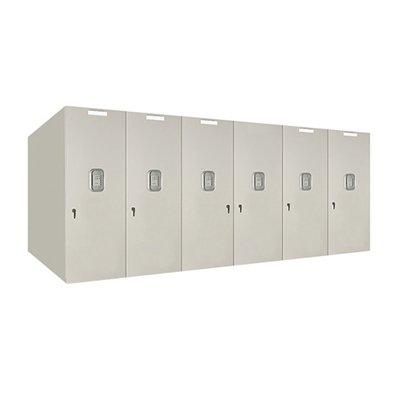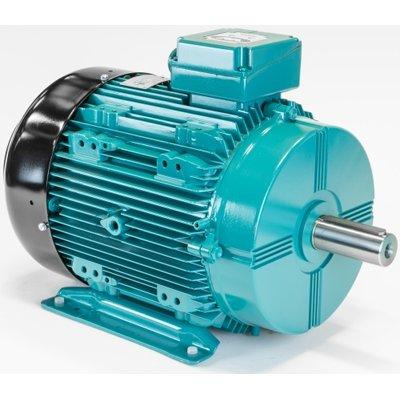Alex Guichard, the Vice President of Product Marketing at Phononic, was recently interviewed by Laser Focus World to discuss Phononic’s thermoelectric cooling technology for LiDAR (Light Detection and Ranging).
This remote sensing method uses light in the form of a pulsed laser to measure ranges, acting as ‘the eyes’ for autonomous vehicles. The automotive LiDAR industry is a very crowded market with numerous startups jockeying for top position.
Phononic’s LiDAR TECs
This is an exciting prospect for Phononic, with their cool LiDAR TECs providing unmatched safety and reliability for autonomous vehicles.
If LiDAR continues to improve with scale, as many anticipate, it represents an enabling technology capable of changing business models for OEMs and changing how cars are made available to the market.
Sensing an opportunity
The decade-old Durham, North Carolina-based manufacturer, Phononic is excited about the potential
The decade-old Durham, North Carolina-based manufacturer, Phononic is excited about the potential. Working with fiber-optic communications helped Phononic establish a niche, enabling high-end, high-data-rate, high-reach fiber-optic components, with precision-controlled temperature management, to lasers and detectors within the transceivers.
Automotive LiDAR has a very similar need. After all, when lasers are pulsing at high frequencies, they need to be very high power and possess well-controlled wavelengths, while also operating over a broad temperature range.
LiDAR sensors
LiDAR sensors also need to exhibit very long range, with a quick refresh or frame rate, with the ability to provide a high-resolution 3D image of its field of view.
“It is a lot to ask from one sensor coupled with the need to work in rain or shine, and across a broad temperature range, all without being flooded by sunlight or interference from other LiDAR systems that will likely be on the road,” said Phononic’s Alex Guichard, adding “It also has to be incredibly reliable, since it’s a safety-critical system.”
Wide deployment of LiDAR technology
As LiDAR finds its footing and possibly captures market share, the successful approach could presumably take two very different directions. Alex Guichard said, “The first being the low-cost, low-range, low-performance systems, which depend on flash LiDAR using pixels. They’re trying to take that low-cost approach today, with the goal of bringing the performance high enough to deliver needed levels of autonomy.”
Alternatively, there are systems on the market currently that are already offering high performance, including the ability to achieve the specs and requirements for high levels of autonomy. Of course, this approach currently has a much higher price tag.
“Yet, the thinking is, with more players focused on further innovation, the possibility exists to drive costs out of the already capable systems, while also maintaining the existing performance the advantage,” stated Alex Guichard.
Investments in high-performance approaches
But, notable investments in high-performance approaches are gaining steam
Without a crystal ball, it’s impossible to tell which school of thought will win, or if it will be another technology altogether that automakers ultimately adopt. But, notable investments in high-performance approaches are gaining steam.
All this activity is good news for Phononic. After all, a predictable, precise, and consistent temperature is crucial, no matter what is happening within the operating environment.
Solving the challenge
Reliability is obviously a huge requirement and big concern, considering the temperature ranges sensors need to be, in order to be able to not just survive, but operate for an extended period.
Alex Guichard adds, “They operate past the boiling temperature of water—and compound semiconductor components like lasers and detectors don’t love that sort of environment.”
Local thermal environment regulator
Phononic’s primary technology offering acts as a local thermal environment regulator for the compound semiconductor component, addressing reliability since the laser itself is not exposed to such dramatic temperature swings.
When combining long range, wide field of view, high refresh rate, and high resolution, a signal-to-noise problem exists. “The four qualities are fundamentally at odds. If you try to improve one, you’re probably going to squeeze another,” said Alex Guichard, adding “Active cooling could improve detector sensitivity, as well as the stability and steady-state power output of the laser.”
Overarching issues
For instance, lasers and automotive LiDAR sensors require much higher power"
Constant learning - At this point, no one knows the requirements. Alex Guichard stated, “We know the operation is very similar to fiber-optic communications, but we are focused on understanding the differences.”
He adds, “For instance, lasers and automotive LiDAR sensors require much higher power and the operating temperature ranges are more extreme. We’re starting to understand how much more of an extreme environment it is and how it impacts our devices. We need to figure out how much further we can push our offering.”
Expecting the unknowns
What will the adoption rate look like? What’s the anticipated design cycle? As ABI suggests, market uptake isn’t going to reach kind of critical mass for at least another five years - making any investment a long-term play.
Alex Guichard concludes, “Some sort of LiDAR sensing, some sort of very detailed, high-resolution 3D Point Cloud technology is necessary. And, we believe to achieve the requirements for such high levels of autonomy, you actually need a cool LiDAR.”













